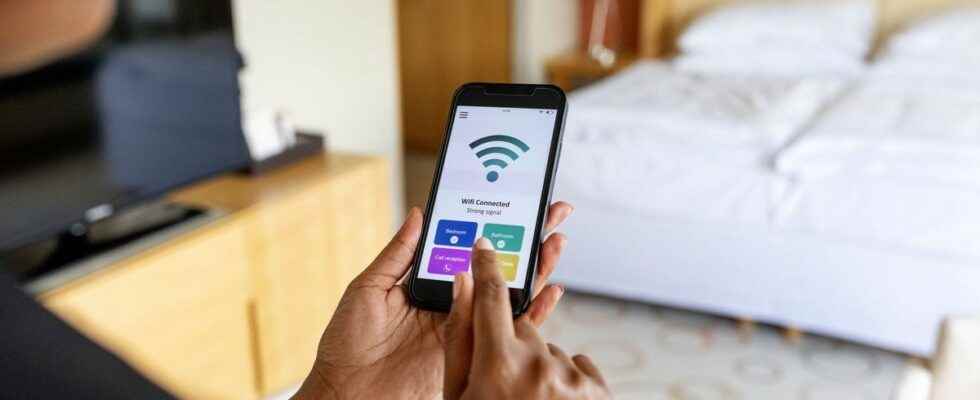Published on
Updated
Reading 2 mins.
To overcome the lack of knowledge about electrosensitivity – a disease characterized by intolerance to electromagnetic fields and which affects more and more French people – ANSES is calling for volunteers.
In France, approximately 5% of the population is electrosensitive, i.e. some 3,350,000 people. However, this disease – characterized by a more or less severe intolerance to electromagnetic waves – is still little known. In this context, ANSES (National agency food safety,environment and work) launches a “call for volunteers” to better understand the disease and the French people concerned.
Electrosensitivity, an emerging disease
Redness, tingling, fatigue, weariness, difficulty concentrating… The symptoms of electrosensitivity (or electromagnetic hypersensitivity) are numerous and varied, but they are nevertheless difficult to spot.
“The expert appraisal published by ANSES in 2018 on electrohypersensitivity showed that the population of EHS people is very heterogeneous. EHS people themselves are very heterogeneous, due to the nature and intensity of the symptoms described, the sources of incriminated electromagnetic fields, and the adaptations of their daily life that they put in place”says ANSES.
The symptoms, which are non-specific (they may be associated with other illnesses) and not explained by a clinical examination, are therefore still misdiagnosed.
“The problem we face is that of the diagnostic definition of electro-hypersensitivity. This is fundamental for making hypotheses aimed at understanding the mechanism. In addition, we are faced with a syndrome, more than a particular, well-defined and reproducible characterization of a pathology, which raises the problem of nosology and the demonstration of causality.“, admits Yves Lévy, CEO of Inserm, during his hearing in Parliament on May 31, 2018.
A medical wandering that does not help the sick, daily victims of objects producing waves (WiFi box, Bluetooth connected objects, CPL Linky, refrigerator, toaster, induction hob, hair dryer, air conditioners, etc.).
To improve treatment, ANSES has been working with patients for several years. At the start of the year, she even wanted to speed up research into this disease by launching a call for volunteers.
“The objective of this survey is to determine, by combining the collection of symptoms, the personal and medical history of the person, his daily adaptation and a clinical examination, for a large number of EHS (at least 200), criteria for defining homogeneous groups of patients Once these criteria have been identified, it will be possible to initiate studies with homogeneous groups, and therefore greatly improve the ability of these studies to provide solid results, whether whether it is the search for the causes of EHS, or management”, reveals ANSES.
The first regions concerned are Brittany and Rhône-Alpes
This survey, which follows a feasibility study carried out in Brittany between 2017 and 2019, will therefore “to meet electrohypersensitive people, and in particular those who have chosen to move away or even isolate themselves from potential sources of exposure“, further details the Agency.
It specifies that any electrohypersensitive person can volunteer, provided they live in the first two regions concerned – ie Brittany and Rhône-Alpes.
This research on electrohypersensitivity is carried out by two research firms commissioned by ANSES:
- SEPIA-Santé specialized in epidemiology, public health, and health-environment (Lorient)
- Environment & Society specialized in sociology and anthropology of health (Concarneau).
If you are electrohypersensitive and would like to volunteer, or if you have any questions, you can contact the SEPIA-Santé team: [email protected] – 07 88 49 70 73 – 8 mail Jeanne Villepreux Power – 56100 Lorient
